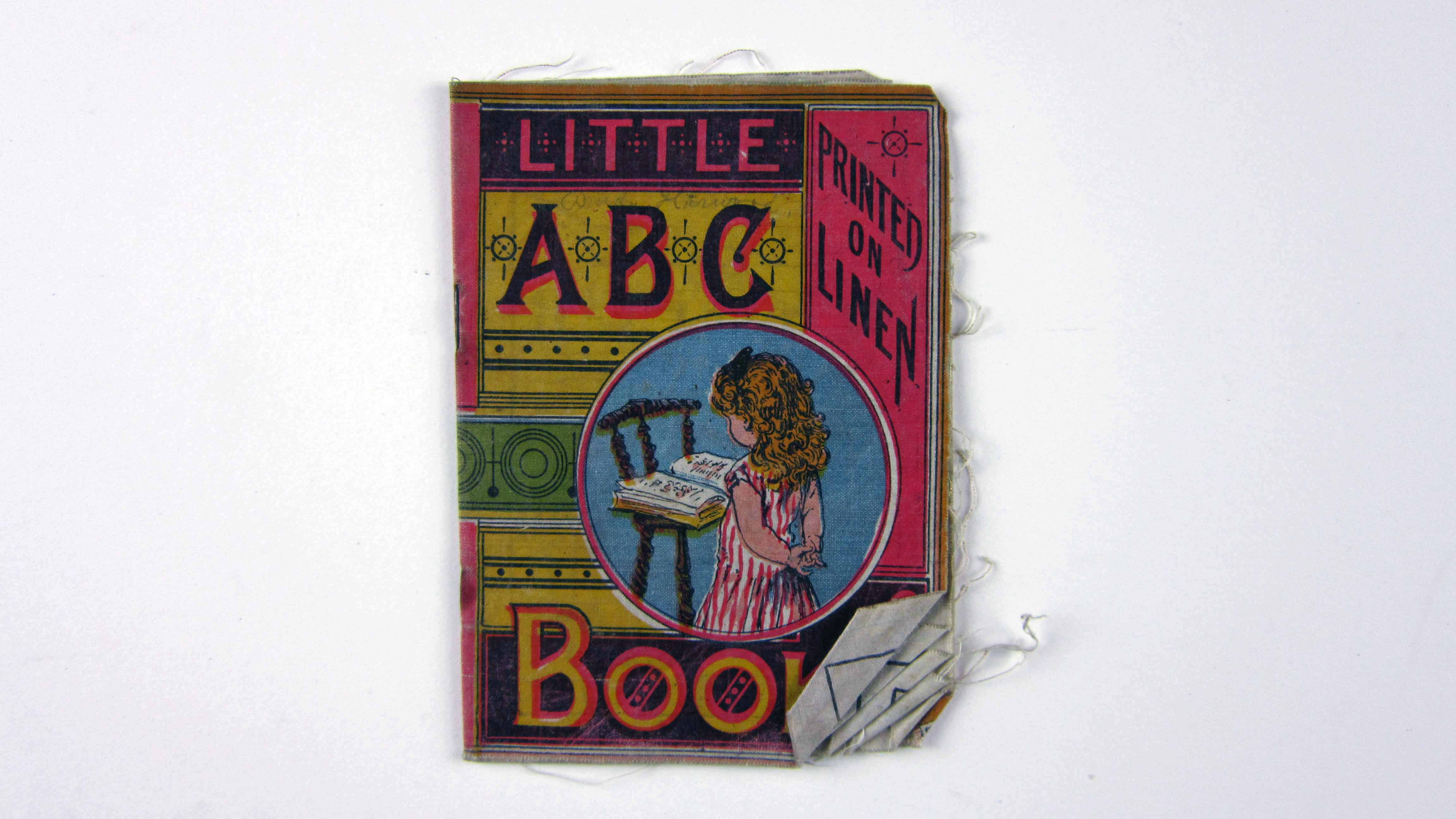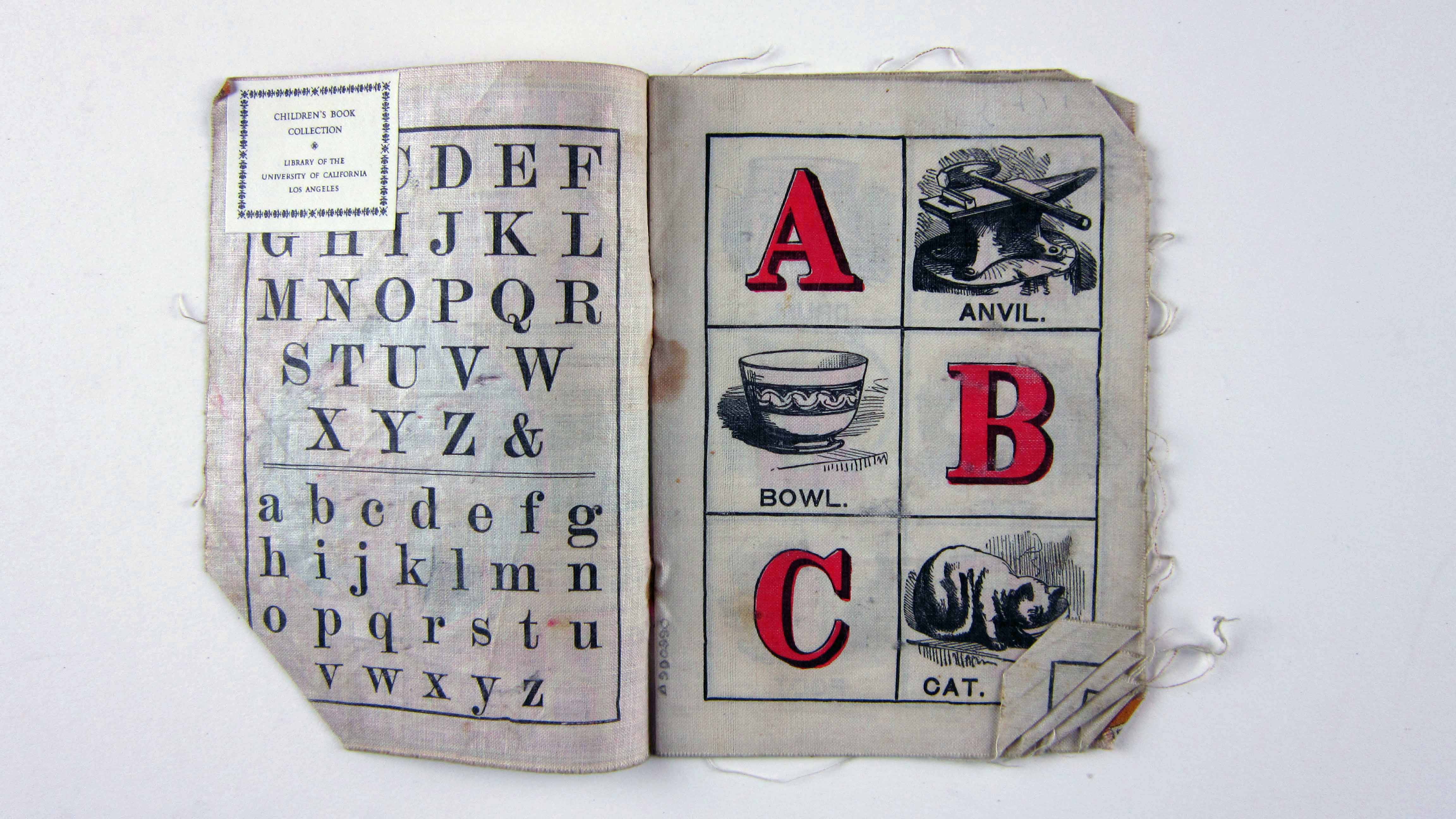

Alphabet books offer a vivid insight into the history of literacy and culture, as well as concepts of childhood. The Children's Book Collection at UCLA contains a rich array of these materials, some well-worn and much-used, some still bright and fresh. Each is a gem of print production and graphical imagery from another time and place. Though the history of alphabet books continues to the present, this exhibit focuses on the works in our collections published between 1700 and 1900, including horn books, primers, works of didacticism and seriousness, whimsy and play.
2. A Jumble ABC
3. A Little Pretty Pocket-Book
4. A New Lottery Book of Birds And Beasts
5. A Pretty Play-Thing for Children of All Denominations
8. ABC of Objects for Home And School
10. ABC with Pictures & Verses
12. Alphabet Et Instruction Pour Les Enfans
16. Dolly's ABC Book
17. Flora's ABC
18. Home ABC
22. Hornbook C. 1700
23. Large Letters for the Little Ones
24. Little ABC Book
25. Little People: An Alphabet
26. Martin's Nursery Battledoor
27. Mother Goose ABC
28. My Darling's ABC
29. Orbis Sensualium Pictus Quadrilinguis
30. People of All Nations: A Useful Toy for Girl Or Boy
31. Picture Alphabet
32. Pretty ABC
33. Railway ABC
34. Rusher's Reading Made Most Easy
38. The Alphabet of Old Friends
40. The Amusing Alphabet for Young Children Beginning To Read
42. The Child's Christian Education
45. The Easter Gift
47. The Favorite Alphabet for the Nursery
49. The Franklin Alphabet And Primer
51. The Golden ABC
55. The Moral And Entertaining Alphabet
57. The Old Testament Alphabet
59. The Picture Alphabet for Little Children
62. The Sunday ABC
63. The Union ABC
64. The Young Child's ABC, Or, First Book
65. Tom Thumb's Alphabet: Picture Baby-Books
67. Warne's Alphabet And Word Book: with Coloured Pictures
68. Wood's Royal Nursery Alphabet
Title Little ABC Book


Brief description Linen alphabet book with charming cover and simple, yet engaging illustrations. Fraying on edges and creased corner.
Full description The Little ABC Book is a charming alphabet book printed on linen. It was published in London by McLoughlin Bros. in 1850. The alphabet book consists of ten pages with medium sized type font. The upper case letters are in a bold red that catches the reader's eye. Each letter has a corresponding black and white image depicting the word. The vocabulary terms throughout the book do not have a specific theme. Some examples include basic words such as drum, egg, and foot. On the charming and colorful front cover is a little girl reading a book with her back to the reader. An illustration of a little girl quietly playing with a doll is on the back cover
Literacy There is no single route to a literate society. Throughout history there have been and continue to be various reasons to develop literacy, such as aspiring to the demands of the class a child is born into, lifestyle or work needs, and nationalism. The Little ABC Book suggests that the child learning the alphabet is part of a community and family where literacy is a natural part of childhood development for personal and academic growth. The pleasant pictures of a young child reading and playing with a doll on the front and back cover, the simple black and white sketches inside the pages, and the generic monosyllabic words engage the child in a positive manner. The child learning from this book is being exposed to a well-rounded word bank, rather than being encouraged to become familiar with or work towards a specific career or religious goal that oftentimes permeated children's instructional books.
Childhood A mid-1800's alphabet book, the Little ABC Book is one that would most likely appeal to a young girl as an introduction to the alphabet due to the charming front illustration that catches the reader's eye. The front cover features a young girl reading a book, while on the back she is playing with a doll. As it is made of soft linen, the book has an inviting appearance. The text is comprised of basic words, which allows the book to serve as a good foundation for a child who is beginning literacy, insofar as the child who is being introduced to the alphabet can see the difference between the lower and upper case letters. The child would not be overwhelmed by the images, which are in black and white and simple in design. The book would most likely be found in a household that encourages children to attach play with learning. It falls under the umbrella of thinking of philosophers such as Jean-Jacques Rousseau and William Wordsworth, both of whom were proponents of an ideal childhood, where children were free to indulge in the developmental stage by playing and using their imaginations.
Iconography Cultural norms were infused into alphabet books in every era. The concept of childhood as a valuable stage of development was beginning to take shape during the 1800's and various philosophers conveyed their thoughts on children and their rearing. Images and vocabulary found in alphabet books can be viewed through the cultural lens of this period. The Little ABC Book presents softened images of a docile child reading on the cover. The vocabulary is fairly basic and includes generic monosyllabic words. The illustrations on the pages of the book are simple yet engaging, and include items and toys belonging to children who are experiencing a childhood where there is a balance of play and learning. It would seem that the child reading this book is expected to become literate, but not for a specific religious purpose or career goal. Based on this particular book, it is evident that the culture of the time accepts childhood as the time to acquire useful knowledge. The child is expected to know the names of household items and toys, such as "egg" and "drum."
Production The Little ABC Book was published in New York in 1850. McLoughlin Brothers was the publishing house responsible for this particular alphabet book. The company, which was active between 1828 and 1920, focused on publishing children's books and board games. The book is comprised of basic words and illustrations. McLoughlin Brothers often published stories that were retellings of well-known children's tales that were usually moralist or religious in theme. There was an educational tone to almost all of the books published by the company. The illustrations are engaging, an example of the publishing company's history of pioneering the use of color printing technologies. Additionally, the vivid colors of the front cover highlight McLoughlin Brothers' trademark bright and hand-colored images. The popularity of the company's children's books allowed the publishing house to stay up-to-date with new printing trends and they introduced the revolutionary invention of applying oil colors to zinc plates.
Publisher McLoughlin Brothers
Publication place New York
Date 1850
UCLA Call Number CBC Z1033.H8 L58 1850
Repository UCLA Charles E. Young Research Library, Dept. of Special Collections
Dimensions 14 cm
Technologies of production Printing
Media and Materials Book made of linen cloth
Caption